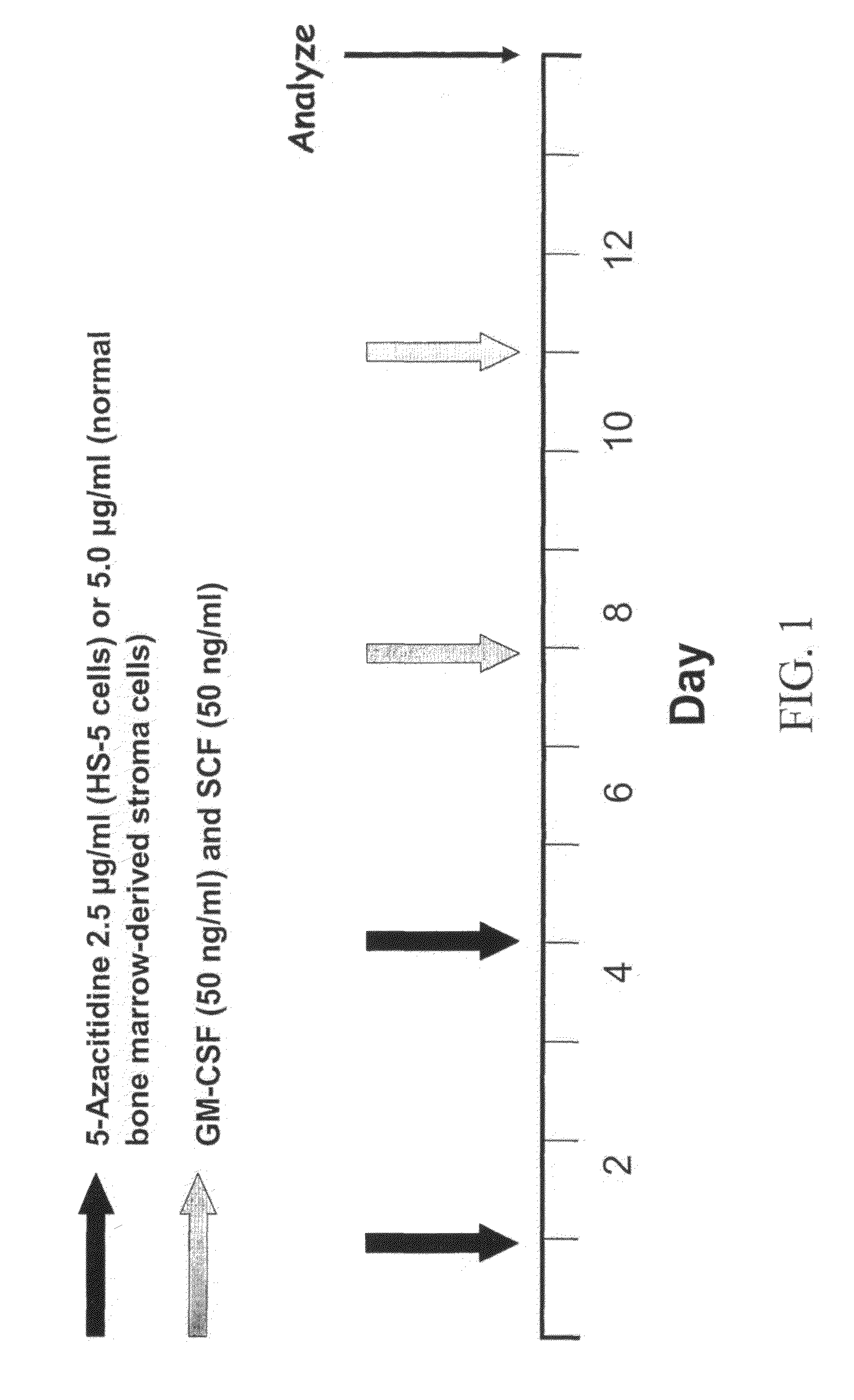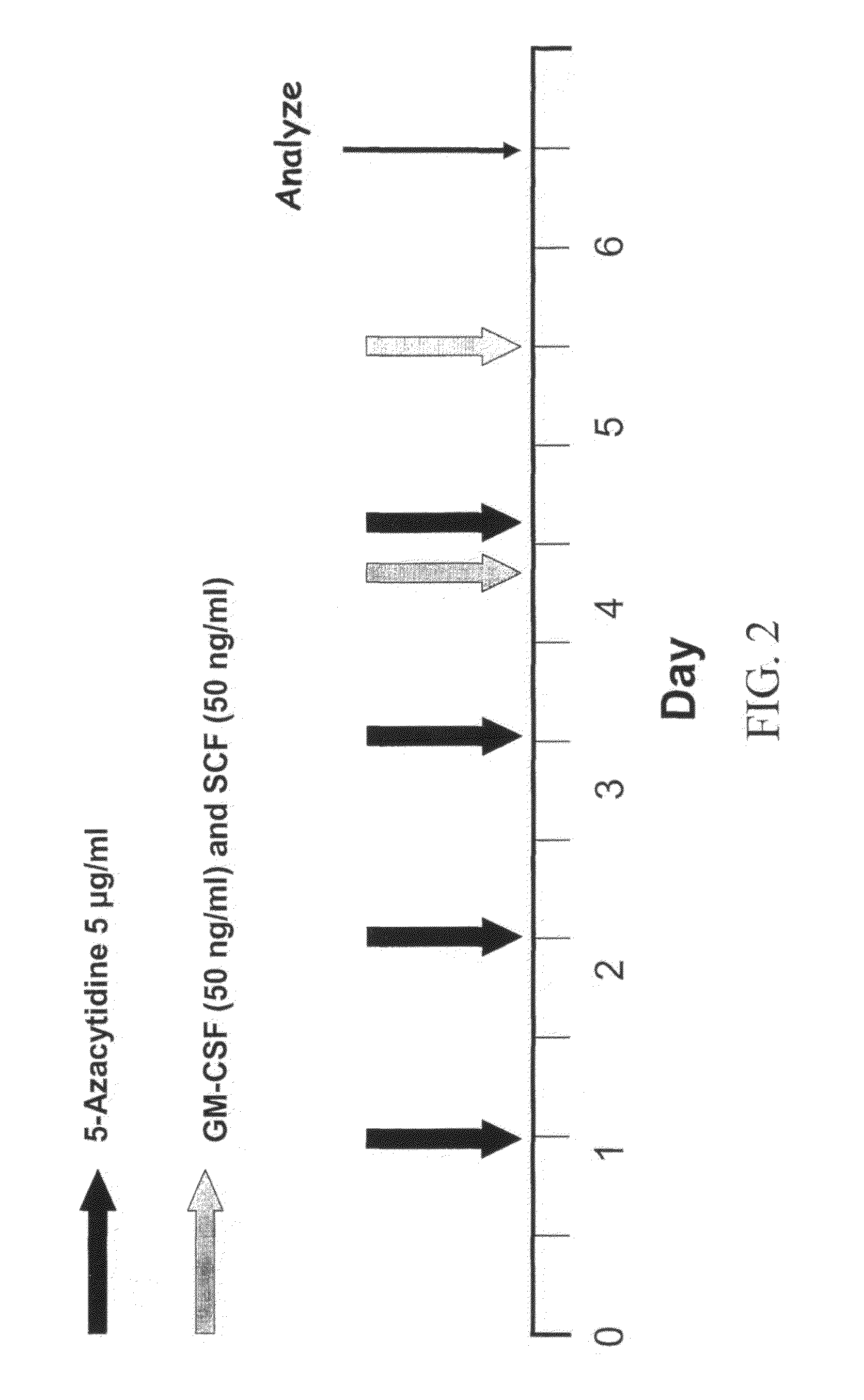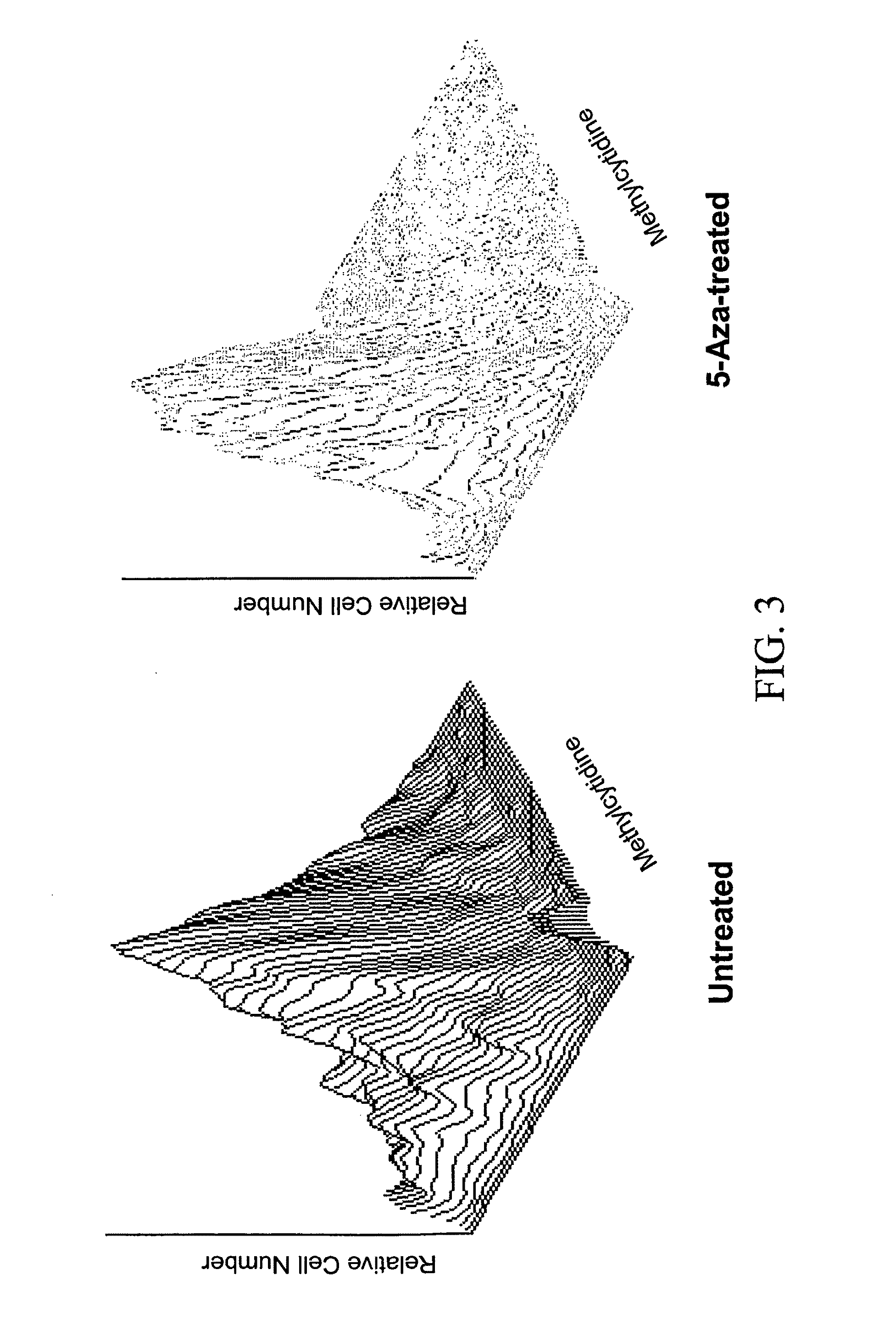Methods for transdifferentiating cells
a technology of transdifferentiation and cells, applied in the field of molecular biology, can solve the problems of long-standing scientific puzzle of cytosine methylation, patient's disease may progress and worsen, etc., and achieve the effects of promoting demethylation, facilitating demethylation, and relatively straightforward invention practi
- Summary
- Abstract
- Description
- Claims
- Application Information
AI Technical Summary
Benefits of technology
Problems solved by technology
Method used
Image
Examples
example 1
Conversion of a Fibroblast Cell Line and Normal Bone Marrow Stromal Cells into Hematopoietic Cells
[0050]The present example demonstrates the application of demethylating agents to produce hematopoietic cells from a fibroblast cell line (HS-5) or normal bone marrow stromal cells.
1. Materials and Methods
[0051]Cell lines. The human bone marrow stroma / MSC cell line HS-5 was obtained from ATCC. These fibroblast-like cells are plastic adherent and grow as a single layer in α-medium (GIBCO, Grand Island, N.Y.) supplemented with 10% fetal calf serum (FCS; Hyclone, Logan, Utah). The cells were gown in tissue culture flasks (Falcon, Bedford, Mass.) at 37° C. in a humidified atmosphere of 5% CO2 in air, their culture media was replaced once a week, and the cells were split at 1:10 and re-plated in identical tissue culture flasks before confluence. In different experiments 5-Azacytidine, granulocyte-macrophage colony-stimulating factor (GM-CSF) and stem cell factor (SCF) were added to the cultu...
example 2
Transdifferentiation of Cells Into Hematopoietic Cells Using 5-Azacytidine and Other Growth Factors
[0063]FIG. 4 demonstrates that when the CD45 negative HS-5 human fibroblast cell line was treated with the drug 5-azacytidine in the presence of the growth factors GM-CSF and stem cell factor, about 11% of the cells express the hematopoietic marker CD45. The expression of CD45 is time dependent, beginning at day three after the setting of the culture. In these studies, HS-5 cells were incubated with or without 5-azacytidine and / or growth factors according to the schedule described in FIG. 1. On day 13 the cells were harvested and analyzed for the presence of cell surface CD45 by FACS. All viable cells were analyzed and the CD45-corresponding isotypic control was used. Untreated cells and cells treated with GM-CSF and SCF alone did not express CD45. In contrast, 3.5% of the cells treated with 5-azacytidine and 11% of the cells treated with 5-azacytidine expressed CD45.
[0064]Converted (s...
example 3
Transdifferentiation of Bone Marrow-Derived Human Stroma Cells into Hematopoietic Cells
[0065]In the next experiment, the effect of DNA demethylation was tested in normal human bone marrow stromal cells. Normal bone marrow adherent cells were grown in culture until they formed a monolayer of CD45-negative cells (tested as described above). Untreated, 5-azacytidine—and / or growth factor (GM-CSF plus SCF)-treated cells (in accordance with the protocol presented in FIG. 1) were evaluated on day 13 of culture for the presence of the cell surface marker CD45 by FACS analysis. A CD45-corresponding isotypic control antibody was used. As demonstrated in this figure, 16% of the CD45-negative normal marrow mesenchymal cells (i.e., bone marrow derived fibroblastic cells) converted into CD45-positive cells after treatment with 5-azacytidine and growth factors (GM-CSF+SCF). Untreated cells, cells treated with only 5-azcytidine or growth factors remained CD45-negative. FIG. 6 shows that up to 16% o...
PUM
| Property | Measurement | Unit |
|---|---|---|
| time | aaaaa | aaaaa |
| time | aaaaa | aaaaa |
| time | aaaaa | aaaaa |
Abstract
Description
Claims
Application Information
 Login to View More
Login to View More - R&D
- Intellectual Property
- Life Sciences
- Materials
- Tech Scout
- Unparalleled Data Quality
- Higher Quality Content
- 60% Fewer Hallucinations
Browse by: Latest US Patents, China's latest patents, Technical Efficacy Thesaurus, Application Domain, Technology Topic, Popular Technical Reports.
© 2025 PatSnap. All rights reserved.Legal|Privacy policy|Modern Slavery Act Transparency Statement|Sitemap|About US| Contact US: help@patsnap.com



